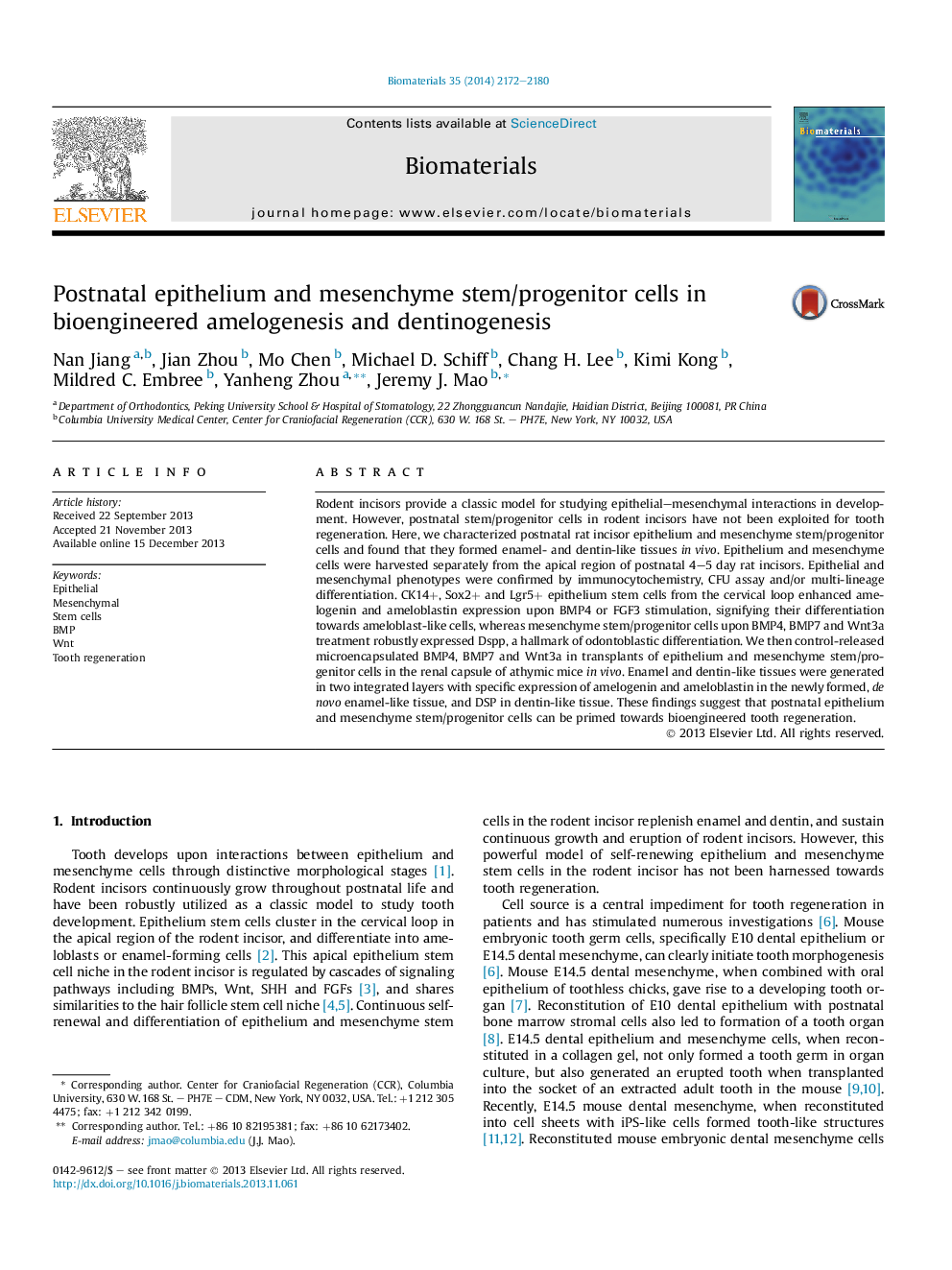| Article ID | Journal | Published Year | Pages | File Type |
|---|---|---|---|---|
| 10228365 | Biomaterials | 2014 | 9 Pages |
Abstract
Rodent incisors provide a classic model for studying epithelial-mesenchymal interactions in development. However, postnatal stem/progenitor cells in rodent incisors have not been exploited for tooth regeneration. Here, we characterized postnatal rat incisor epithelium and mesenchyme stem/progenitor cells and found that they formed enamel- and dentin-like tissues in vivo. Epithelium and mesenchyme cells were harvested separately from the apical region of postnatal 4-5 day rat incisors. Epithelial and mesenchymal phenotypes were confirmed by immunocytochemistry, CFU assay and/or multi-lineage differentiation. CK14+, Sox2+ and Lgr5+ epithelium stem cells from the cervical loop enhanced amelogenin and ameloblastin expression upon BMP4 or FGF3 stimulation, signifying their differentiation towards ameloblast-like cells, whereas mesenchyme stem/progenitor cells upon BMP4, BMP7 and Wnt3a treatment robustly expressed Dspp, a hallmark of odontoblastic differentiation. We then control-released microencapsulated BMP4, BMP7 and Wnt3a in transplants of epithelium and mesenchyme stem/progenitor cells in the renal capsule of athymic mice in vivo. Enamel and dentin-like tissues were generated in two integrated layers with specific expression of amelogenin and ameloblastin in the newly formed, de novo enamel-like tissue, and DSP in dentin-like tissue. These findings suggest that postnatal epithelium and mesenchyme stem/progenitor cells can be primed towards bioengineered tooth regeneration.
Related Topics
Physical Sciences and Engineering
Chemical Engineering
Bioengineering
Authors
Nan Jiang, Jian Zhou, Mo Chen, Michael D. Schiff, Chang H. Lee, Kimi Kong, Mildred C. Embree, Yanheng Zhou, Jeremy J. Mao,
